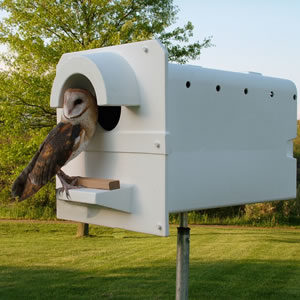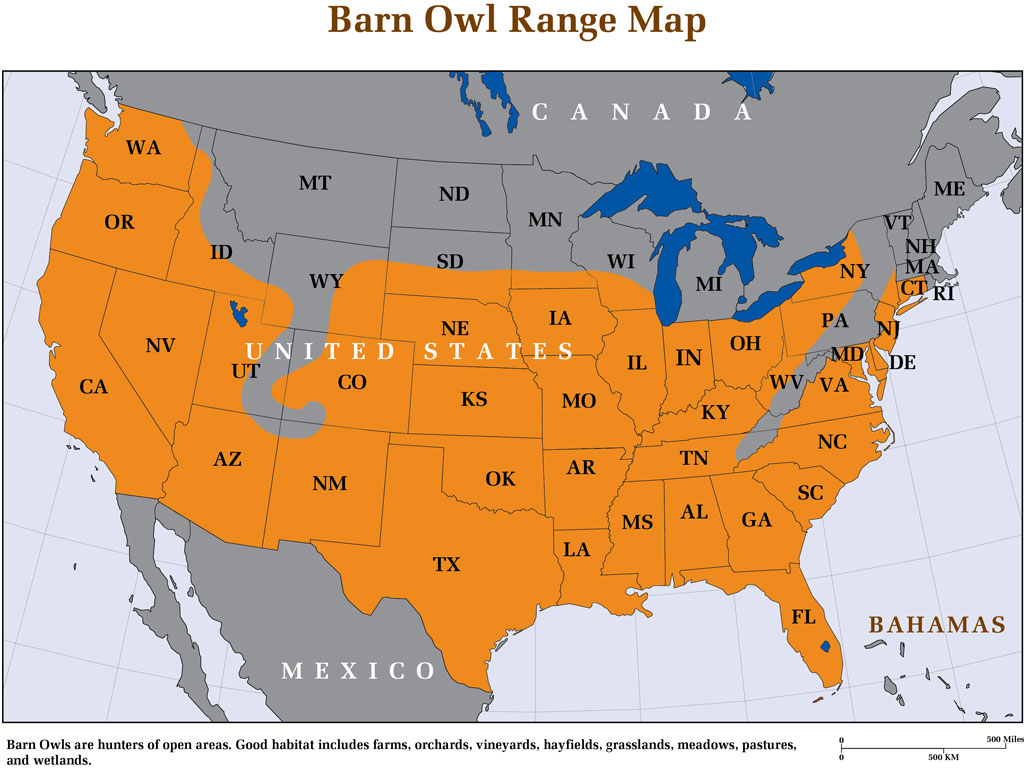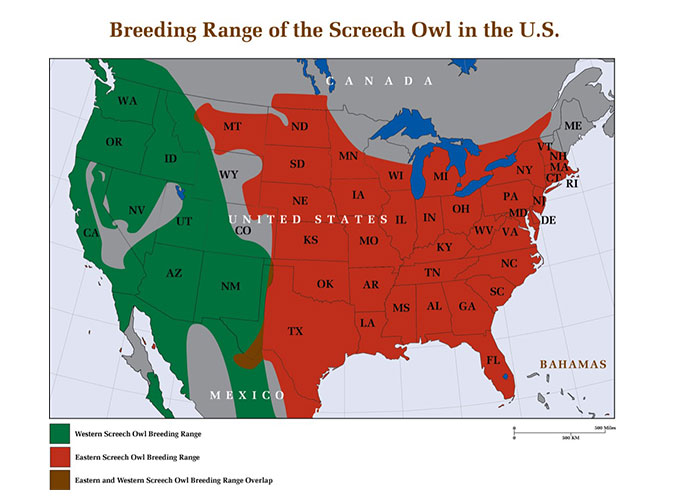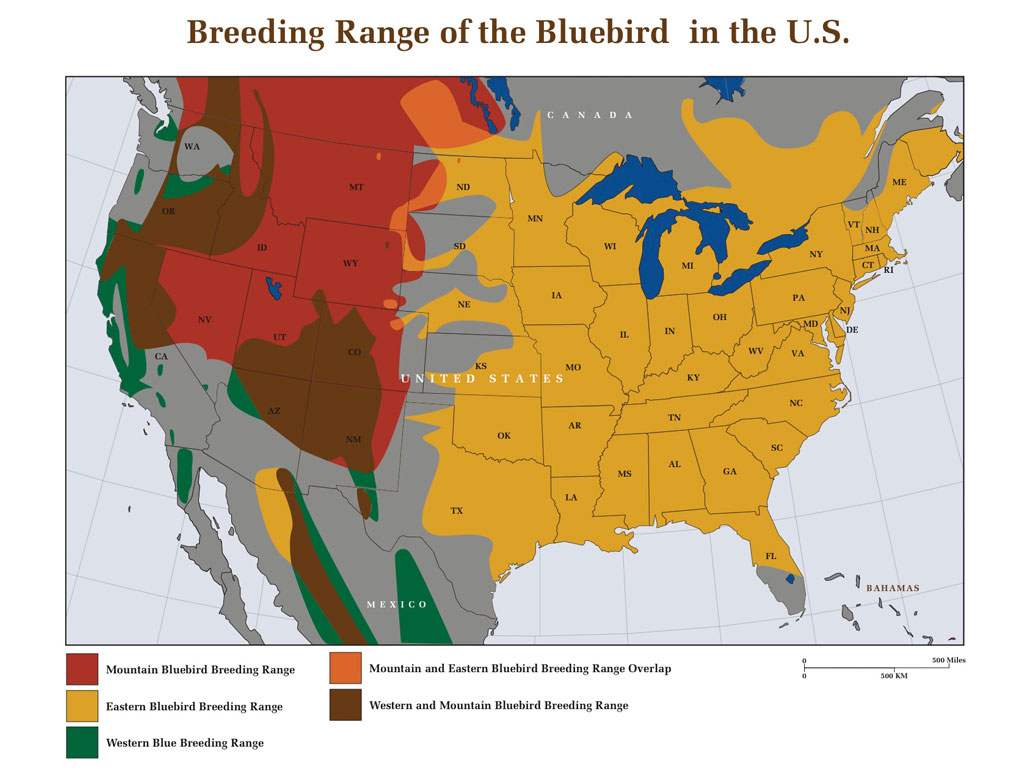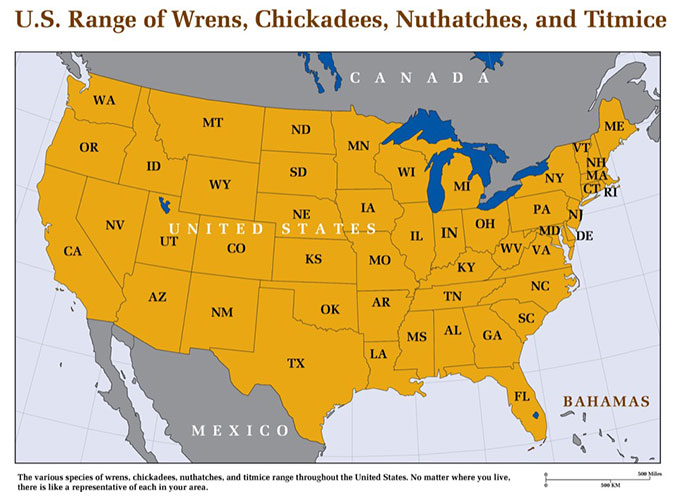Free Shipping to the Contiguous United States
Barn Owls in Missouri
Missouri Barn Owls
Almost the entire state of Missouri has good barn owl populations or the potential for them. 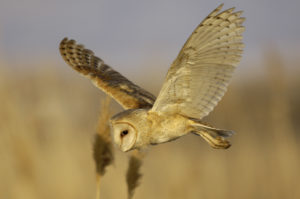 The barn owl is very common along the eastern edge of the state in the interior river lowlands and the Mississippi Alluvial Plain. The northern half of the state harbors good populations in the Central Irregular Plains region where a lot of crops are grown, and the Ozark grasslands in the southeastern part of the state form excellent habitat for barn owls. The eastern Ozarks, where thick forests dominate, have only localized populations in intermittent areas of grassland; the Corn Belt in the upper northwestern corner has low populations at best.
The barn owl is very common along the eastern edge of the state in the interior river lowlands and the Mississippi Alluvial Plain. The northern half of the state harbors good populations in the Central Irregular Plains region where a lot of crops are grown, and the Ozark grasslands in the southeastern part of the state form excellent habitat for barn owls. The eastern Ozarks, where thick forests dominate, have only localized populations in intermittent areas of grassland; the Corn Belt in the upper northwestern corner has low populations at best.
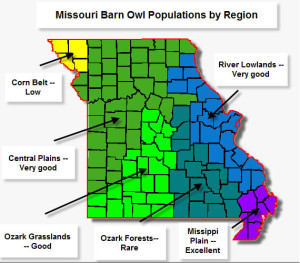
The Missouri Department of Natural Resources
Bob Gillespie, biologist for the Missouri Department of Natural Resources, says they get a lot of calls about barn owls, especially during the wheat harvest. He notes that they nest in silos, old barns, hollow trees, and nest boxes in Missouri. They have also been known to nest in some numbers in holes in the banks of the various rivers in the state.
Barn Owl Conservation Programs in Missouri
During the 1980’s the Raptor Rehabilitation and Propagation Project, Inc. (RRPP) and the Missouri Department of Conservation introduced 57 captive-reared barn-owls into St. Charles County, Missouri. The release area was a 900 acre riverine marsh (Marais Temps Clair Wildlife Area) in the Missouri River basin. A few of these birds, identified by their bands, were found nesting in the same area in subsequent seasons.
The World Bird Sanctuary released over 900 captive bred barn owls into Missouri and Illinois during this time as well. Although breed and release programs have in recent years been less favored than habitat preservation and enhancement through nest box programs, these records show that a moderate amount of success can occur when captive-bred owls are released into good habitat.
The barn owl was recently removed from the Missouri’s list of threatened species.
Missouri Barn Owl Box Programs
As referred to earlier, conservationists tend to favor habitat preservation and installation of nest boxes over breed and release programs to bolster barn owl populations. The most limiting factor for barn owl numbers in otherwise good habitat is the availability of suitable nesting cavities for this large owl. Today biologists are installing nest boxes in prime habitat and the Missouri Department of Conservation encourages residents to put up nest boxes wherever there are grasslands, wheat fields, hay fields, pasture, or wetlands.
Missouri Agriculture and Barn Owls
The wheat fields and apple orchards of Missouri are excellent candidates for using barn 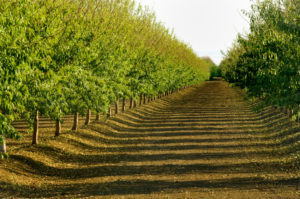 owls in large numbers for rodent control. Voles (meadow “mice”) cause a great deal of destruction in both crops, eating large amounts of grain, and girdling roots and trunks in orchards. The high populations of rodents in both types of agriculture would likely attract barn owls in good numbers in Missouri. Both wheat fields and orchards are known to be good habitat for barn owls in the rest of the country. Any such nest box programs would contribute to conservation efforts on behalf of this beautiful raptor.
owls in large numbers for rodent control. Voles (meadow “mice”) cause a great deal of destruction in both crops, eating large amounts of grain, and girdling roots and trunks in orchards. The high populations of rodents in both types of agriculture would likely attract barn owls in good numbers in Missouri. Both wheat fields and orchards are known to be good habitat for barn owls in the rest of the country. Any such nest box programs would contribute to conservation efforts on behalf of this beautiful raptor.
For more information, go to our Product Page, read about barn owls and Integrated Pest Management, and our excellent article on the Economic Value of Barn Owls.

